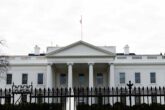August 18, 2020
The Growing Threat of Domestic Disinformation in Poland
“[M]edia bias can never be part of a truly vibrant democracy,” warned the Organization for Security and Co-operation in Europe (OSCE) in late June, after Poland’s first-round presidential election. The OSCE had cause for alarm; after mounting attacks, opposition candidate and Warsaw mayor Rafał Trzaskowski filed a lawsuit against state broadcaster TVP for airing false and defamatory attacks against him. TVP has increasingly succumbed to the editorial control of the Law and Justice Party (Prawo i Sprawiedliwość, PiS) since its 2015 parliamentary election victory. In the lead-up to the first-round vote, the broadcaster accused Trzaskowski of representing “powerful foreign interests” such as George Soros, repeated anti-Semitic tropes, and sought to paint Trzaskowski as an adherent of “LGBT ideology,” a concept against which incumbent Andrzej Duda railed during his campaign. TVP, the OSCE observed, “failed in its duty to offer balanced and impartial coverage.”
Despite the OSCE’s warning and the Trzaskowski campaign’s lawsuit, TVP’s attacks continued during the second round. Before entering the mandated campaign quiet period, TVP warned its viewers that Trzaskowski would “fulfill Jewish demands” for Holocaust restitution and that the candidate was more “pro-Germany” than “pro-Poland.” Control of this crucial informational vector helped Duda eke out a narrow victory in 2020, garnering 51.03 percent of votes to Trzaskowski’s 48.97. The changes that have overtaken the Polish political and media climate since 2015 and especially during the 2020 election campaign represent a trend across several Western democracies, including the United States, of governments willing to employ the tools and tactics of disinformation on domestic populations for political advancement. The result is a weakened democratic system vulnerable to manipulation from within and without.
The changes that have overtaken the Polish political and media climate since 2015 and especially during the 2020 election campaign represent a trend across several Western democracies, including the United States, of governments willing to employ the tools and tactics of disinformation on domestic populations for political advancement.
These tactics began with the assertion of PiS control over the state broadcaster. A 2017 Freedom House special report, unambiguously entitled “Pluralism Under Attack: The Assault on Press Freedom in Poland” details how PiS sought to reshape Poland’s “lively but highly polarized media environment” into one that would be more supportive of the new government. PiS immediately gained control over Polish public media, including TVP, which had become one of the most consumed and most trusted information sources in the country. In the face of protests from opposition politicians and international observers, a PiS-controlled parliament pushed through a measure to “terminate the mandates of the current members of the national television and radio broadcasters’ management and supervisory boards, and fill their positions through direct appointment by the treasury minister . . . until a ‘new national media organization’ could be created.” As described in the Freedom House report, lawmakers including PiS Member of Parliament Elżbieta Kruk “argued that the public media had been ignoring their mission by spreading ‘ideological and social fashions not accepted by most of society’ with journalists who ‘often sympathize[d] directly with opinions unfavorable towards Poland.’”
The law reverberated throughout the state-owned media before it was officially on the books. At least 235 journalists fell victim to the PiS “purges of the public media” in 2016, according to a liberal Polish journalists’ union. “Not all of the [victims] were simply dismissed from work,” the union writes. “Many of them resigned, not wanting to participate in the political pacification of the media.” Ordinary citizens, too, were dismayed. Over 20,000 people gathered outside the public television studios in January 2016, soon after the measure was passed. Still, the station, as well as its popular evening news magazine, Wiadamości, fell into lockstep with the PiS government, carrying this editorial line through to the consequential 2020 election and a neck-and-neck runoff between PiS incumbent Duda and Civic Platform challenger Trzaskowski.
PiS’s use of the tactics of disinformation has not stopped at the creation of a propagandistic media environment. A 2017 Oxford Internet Institute Report on computational propaganda in the Polish information environment describes how a single communications firm “created more than 40 thousand unique identities, each with multiple accounts on various social media platforms and portals, a unique IP address, and even its own personality, forming a universe of several hundred thousand specific fake accounts that have been used in Polish politics and multiple elections.” These tactics are eerily similar to those employed in the Russian Internet Research Agency’s campaigns during the 2016 U.S. presidential election. The Oxford study’s analysis of 500 probably inauthentic Twitter accounts in a dataset of over 10,000 total accounts shows that “there [were] more than twice as many suspicious right-wing accounts as there [were] left-wing accounts. These accounts [were] highly prolific,” accounting for over 52 percent of tweets in the dataset in a three-week sample. The study concludes that “the Polish right has been more effective [than its rivals] online, having implemented a variety of new tools and practices.”
These tactics continued through 2019’s Polish parliamentary elections. Undercover reporter Katarzyna Pruszkiewicz spent six months working inside a Polish troll farm where employees were given guidance to make posts in support of or attacking Polish organizations and candidates on both the right and left of the country’s political spectrum. TVP—the pro-PiS public broadcaster—was one of the troll farm’s beneficiaries: “An internal report . . . details how the fake accounts were used to denigrate legitimate criticism of the broadcaster . . . [The troll farm’s] accounts created up to 10,000 posts in defence of TVP, with a potential reach of 15 million views.”
The government has taken some precautions to guard against the threat of disinformation during electoral periods. In 2018, ahead of local elections, it launched its “Safe Elections” (Bezpieczne Wybory) website, created with a cross-government, cross-sector team that included representatives of social media platforms. Government officials admitted in interviews last summer that the site, which includes tips for spotting false information online and for reporting “fake news,” was not very popular, but they viewed it as an investment for the future. During the presidential contest, the site debunked disinformation about voting procedures and ballots—a worthy endeavor, though misfocused, given the vectors of domestic disinformation at work.
Poland, as a result, has earned the dubious distinction of being a country of incongruities. Thanks to history, it has a clear-eyed view of the threat of foreign interference, particularly from the Russian Federation. But the PiS government has embraced the disinformation playbook, creating a state-sponsored propaganda network and employing inauthentic accounts to influence online political discourse. Across the Atlantic, the United States is fighting a similar battle, one where polarization is exploited and extended by not only foreign actors but domestic politicians as well. Both countries neglect the homegrown elements at their own peril.
About the Author
Nina Jankowicz is the Disinformation Fellow at the Wilson Center. Her first book, How to Lose the Information War, was published in July.
Learn More
From August to September 2020, CNAS will release weekly commentaries exploring issues related to foreign interference in elections and election security in Europe and the United States. Expert authors participating in the series will examine how Europe is addressing foreign interference in its elections generally, how principles of international law apply to election threats, and how Poland specifically is countering disinformation. Shifting to the United States, commentaries from civil society and federal and state government officials will address voter attitudes about foreign interference, election security, and fostering confidence in the November election.

Bolstering American Democracy Against Threats to the 2020 Elections
About this commentary series On August 13, 2020, the Center for a New American Security (CNAS), in collaboration with the University of Pennsylvania’s Center for Ethics and Ru...
Read MoreMore from CNAS
-
Sharper: National Security in a Divided Congress
Following the 2022 midterm elections, a new U.S. Congress was sworn in, resulting in a divided House and Senate with narrow margins. Key national security legislative items ar...
By Anna Pederson & Cameron Edinburgh
-
Schedule F: An Unwelcome Resurgence
The U.S. government is able to take on high-risk, high-cost ventures—nuclear security, pandemic response, environmental clean-up, food safety, and more—because civil servants ...
By Loren DeJonge Schulman
-
Western Hemisphere Migration is a Long-Term Challenge
Addressing western hemisphere migration should be a national and international priority....
By Carrie Cordero & Cris Ramón
-
The Lawfare Podcast: Klein and Cordero on the Latest FISA Numbers
To discuss the latest in FISA transparency news, the data and what it all means, Benjamin Wittes sat down on Lawfare Live with Carrie Cordero of the Center for a New American ...
By Carrie Cordero




